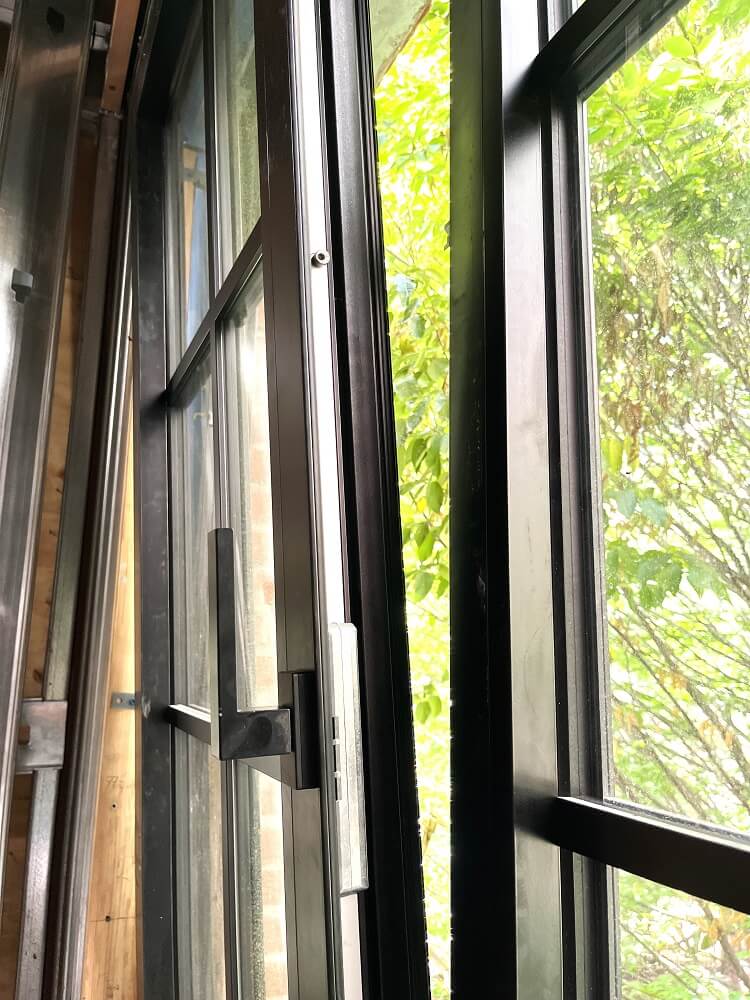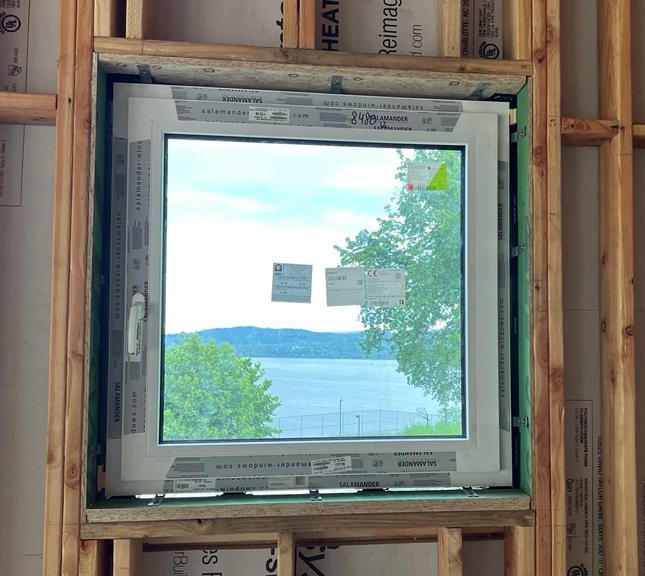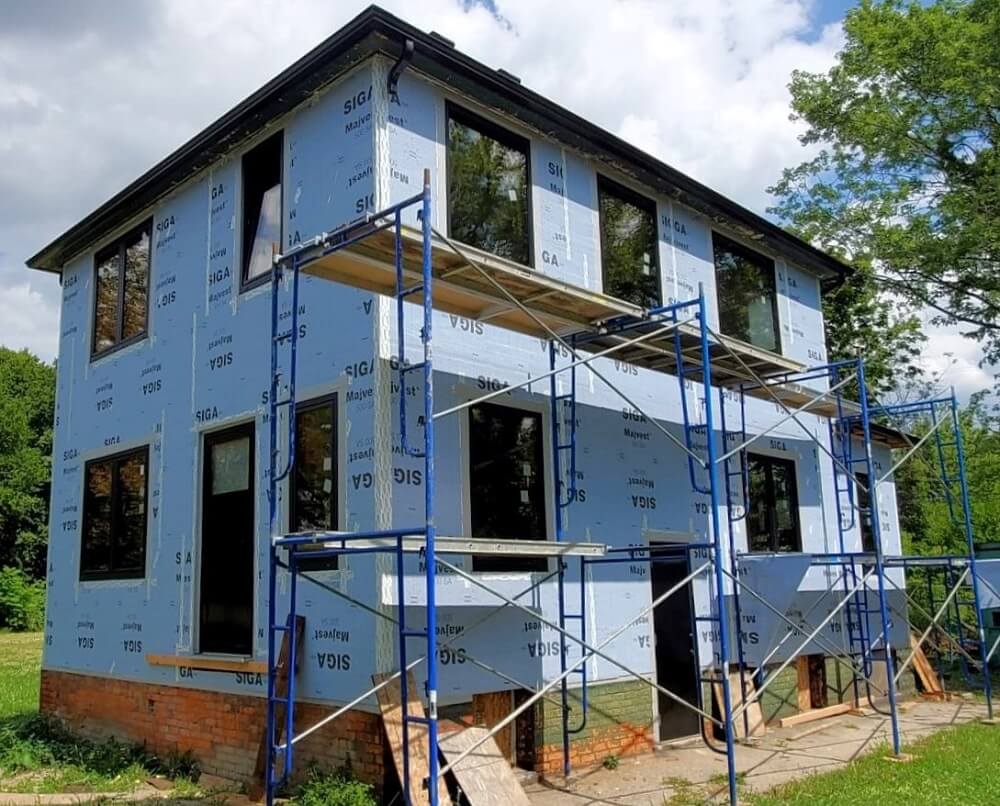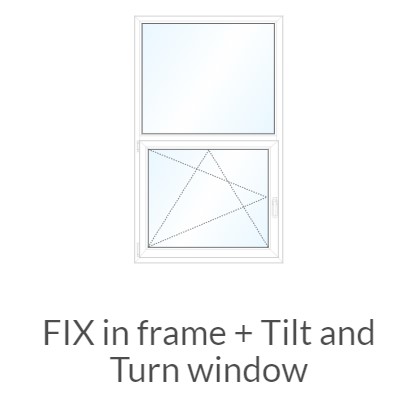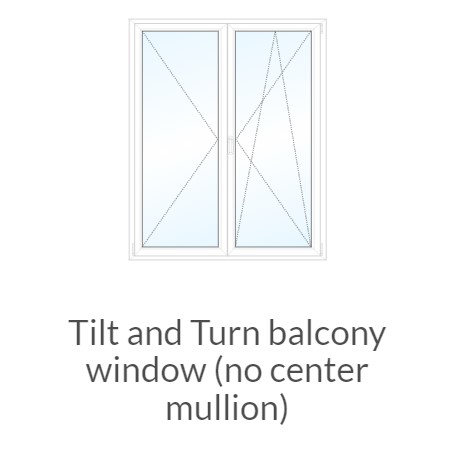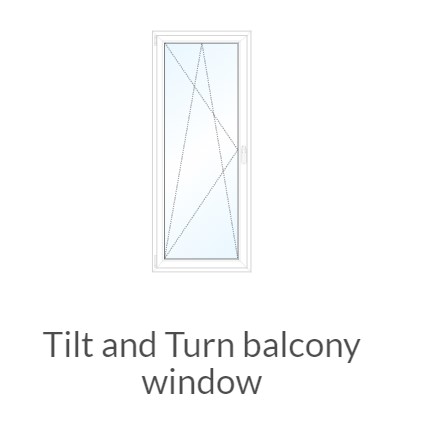Tilt and turn windows from Europe: A complete guide (+ prices and real project photos)
What’s the deal with all those European tilt and turn windows? Are they any good? Should you even consider using them for window projects?
To find the answer, let’s dive into the fascinating world of tilt-and-turn systems and uncover what sets them apart from their American competitors.
How much do European tilt and turn windows cost?
In the beginning, let’s establish that the price will obviously vary based on the window’s:
- color
- material used
- size (height and width)
- the complexity of the construction
- type of glazing
- the number of panels along with their configuration
- its manufacturer
Did you know that Poland leads the world in the export of windows and doors, even surpassing China? With around 3,000 manufacturers, Poland is a top source for high-performance windows at competitive prices, thanks to lower production costs compared to Germany, while still maintaining the highest quality in modern manufacturing.
Examples of prices for tilt and turn windows:
Let’s see the prices for European tilt and turn windows manufactured in Poland and based on German technology.
All the prices shown are from our European window price lists and are based on the top-selling profiles among U.S. construction companies.
See the full offer of tilt and turn windows
Aluminum tilt and turn windows 36″ x 60″ (thermally broken)
Explore affordable European tilt and turn windows
We offer tilt and turn windows made by the best Polish manufacturers. Check out our solutions:
uPVC tilt and turn windows 36″ x 60″

Get uPVC tilt and turn windows price in seconds!
Quickly estimate prices for uPVC tilt and turn windows online with our easy calculator.
Customize options and get an instant PDF quote.
Gallery: real project examples with tilt and turn windows in the USA
For over a decade, we have been active in the window market (previously operating as BestOkna.pl), with a focus on exporting windows. Our first shipment to the USA was delivered on August 16, 2016 to New Jersey. Now, you can place an order for delivery to any location across the USA!
We’d like to show you some photos taken on-site during the installation of tilt and turn windows. Take a look at real images from the installation process.
What do tilt and turn windows look like during installation in an American house?
See real photos from buildings under construction












Check out all window realizations
Pros and cons of European tilt and turn windows – US building professionals perspective
Tilt and turn windows advantages for your business:
Gain an edge with high-performance windows
Using the same, widely available windows as your competitors won’t give you an advantage. European tilt-and-turn windows are custom windows withour extra charge.
European tilt-and-turn windows offer unique features not found in American windows like superior ventilation and dual-opening functions that are rarely found in American windows. Their main features are also:
- Superior energy efficiency
- Durable materials
- Excellent insulation
- Weather resistance
- Low-E coatings
- Customizable design
Increase project value and profit
Thanks to their many advantages over American windows, European windows can significantly increase the value of any building where they’re installed. This added value allows you to boost your project’s overall worth and, ultimately, increase your profit margins.
Fewer complaints, happier clients
Tilt-and-turn windows are renowned for their modern design and high-quality materials, such as aluminum and uPVC. Their durability reduces long-term maintenance costs, leading to fewer callbacks and a lower total cost of ownership for building owners.
Clients who prioritize comfort, safety, soundproofing, and customization will appreciate the quality and functionality these windows offer.
Meet strict energy-efficiency standards
European standards for energy efficiency and eco-friendly production are more stringent than those in the U.S.
As a result, even basic European tilt-and-turn windows achieve impressive thermal performance, with U-factors around 0.23. High-performance passive windows can reach U-factors as low as 0.13. With features like:
- thermal insulating spacers,
- thick glass,
- multipoint locking systems,
- and modern manufacturing techniques,
you can rest assured that your projects will easily meet or exceed energy-efficiency requirements. Additionally, many of tehm are NFRC-certified windows.

Review the best tilt and turn windows!
Check out our rankings and reviews of various window profiles straight from the best European brands
Go to window rankingsTilt and turn windows disadvantages for your business:
Educating your clients
Tilt-and-turn windows aren’t as common in the U.S., so your clients may be unfamiliar with how they work and the benefits they offer. You’ll likely need to spend extra time explaining and can slow down decision-making, especially if your clients are hesitant about trying something new.
Installation requirements
are different than with traditional windows. Tilt-and-turn windows are more heave and require a higher level of precision during installation, which means you’ll need experienced crews who know how to handle them.
Availability and supply
can be a challenge. When you use U.S. suppliers that import these windows from Europe, you’re likely paying a much higher margin.
If you decide to handle the importing yourself, you’ll need extra staff, time, and money to organize shipping. If you’re already thinking about importing from Europe and don’t have experience with it, check out our Full Service Delivery option—we handle everything needed to get your windows to the job site.
Where can you buy European tilt-and-turn windows in the USA?
While it is feasible to purchase European tilt-and-turn windows in the US, it is generally not a financially advantageous decision. These systems are imported by US vendors from Europe, resulting in higher prices.
There are also American profiles available that attempt to replicate the “European style”, however, they tend to lack the same level of quality found in authentic European windows. Opting for these alternatives may lead to significant overpaying for a product that does not match the superior standards of systems produced in Europe.
Sometimes, suppliers don’t clearly state whether the windows were made in the US or imported from Europe, creating ambiguity!
If you value a transparent purchasing process and want expert help with importing European tilt-and-turn windows without overpaying, we’re available for a free consultation on your window project.
You can also import tilt an turn windows by yourself. Learn more about this subject and read how to import windows to the US.
What tilt and turn windows are?
European tilt-and-turn is a type of window design that allows for two distinct opening positions: tilting or turning inwards.
- The tilt function enables the top portion of the window to tilt inwards at the top, providing gentle ventilation.
- The turn variant allows the window to swing open (inward), similar to a casement window.
Tilt and turn windows German origin
German engineers designed the first tilt-and-turn hardware for German windows in the 1950s. They aimed to meet the growing demand for improved functionality, energy efficiency, and easier maintenance.
Tilt-and-turn windows offered a solution by replacing the older design, which used two separate windows with individual panes mounted one in front of the other and opened independently.

European tilt-and-turn windows, you’ll get a product of the highest quality that adheres to strict European norms and is based on the newest, e.g. German technologies and made from first-class materials.
How tilt and turn windows operate: Opening mechanisms explained
The secret lies in its one-of-a-kind handle mechanism, that simplifies the operation, allowing users to easily switch between the tilt and turn functions with a single movement.
A single handle – three possibilities

Tilted
When the handle is turned horizontally, it engages the tilt function of the window. This allows the top portion of the window to tilt inwards from the top, creating a small opening at the top while keeping the bottom securely closed. There is also a “microventilation” variant, where the sash tilts inwards by approximately ¼ inch, allowing for a controlled and gradual airflow.

Turned/Opened
On the other hand, when the handle is turned 180 degrees vertically, it activates the turn function of the window. This enables the entire window sash to swing open inward.

Closed
The window can also be completely closed when the handle is down. Your customer can rest assured, as steel locking pins will make sure the window stays closed tightly.
Options for tilt-and-turn windows
Tilt-and-turn windows offer flexible customization to meet the specific requirements of your projects. You can select from various glazing options for better energy efficiency, sound insulation, or security.
Frame finishes come in a wide range of colors and materials, including aluminum and wood-aluminum hybrids, to match different design aesthetics. Hardware choices, such as concealed hinges or child-safe handles, can enhance both functionality and safety.
These options allow you to deliver tailored solutions, adding value to your projects and maximizing profitability.
Popular configurations:








How to install tilt and turn windows in the U.S.?
Some installers can probably be hesitant to try to mount a European tilt-and-turn window since they lack a nailing flange, which is not necessarily true – here’s our article about European windows with nailing fins.
But even without those flanges, the process is not very complicated.
Installation of tilt and turn windows in a nutshell
European installation includes dowels or mounting anchors instead. The method of installation should be specified in the instructions supplied with the windows by the manufacturer.

- If you use mounting anchors, you install them to the frame prior to inserting the frame into the opening. The frame is set on support blocks and fixed with mounting wedges. After the window is carefully aligned vertically and horizontally, the frame is finally fixed to the wall.
- In an installation using dowels, the installer attaches the frame directly to the wall. First, the installer drills a hole in the wall and inserts the dowels, pressing them firmly to ensure they are securely embedded. Next, they place the window frame into the opening. Using a drill-driver, they then screw the window frame to the dowels.

Summary: Should spec home developers consider tilt turn windows?
When building spec homes, you need to control costs but still offer quality that sells. European windows let you save 50% compared to premium U.S. windows while increasing property value. Unique windows from Europe offer:
- 50% lower price than premium U.S. windows
- Higher quality – better window materials and specifications
- More design flexibility – custom sizes, colors, and high-end materials
- Fully compliant with U.S. building codes and NFRC standards
Competitive pricing and full compliance with U.S. regulations make European windows an attractive choice for spec home developers who want to cut costs without compromising quality.
debesto makes sourcing these windows simple and hassle-free.y How we help:
- Increase your profit margins thanks to business and product consultation
- On-site delivery – we organize shipping for you, hassle-free
- Reliable lead times – avoid delays and meet deadlines
- Straightforward ordering process – no unnecessary emails or calls
- Enhance your brand’s reputation with superior products
- Support in your time zone – available until 4 p.m. EST (contact us)
See how we can help you
- Import European windows to the USA directly from Poland
- Save up to 50% on premium-quality windows
- Add value to your custom project
- Stop wasting time – simplify the process
Explore solutions:

We help source luxury European windows for spec houses

Increase your window margin
Save 50% with European windows. Calculate window and door prices with our online calculators. Aluminum, wood, uPVC estimates available.
Custom window options
Discover how European custom windows might be the solution you need thanks to full customization without high costs.
Save time with a simple process
Learn how to get a European window quote in 3 simple steps and why working with a professional exporter is the best choice for your businessFAQ
How is tilt-and-turn window servicing done in the US? Will there be problems with repairing such windows locally?
Yes, they are American companies that specialize in fixing tilt-and-turn windows. Additionally, European parts are usually available in the US, so the user can service those windows themselves.
On the brighter side, the repairs of the tilt-and-turn windows tend to be rather simple, so there is a possibility that your local window servicer can handle this task and order suitable components straight from Europe.
Can tilt-and-turn windows be installed in existing homes, or are they only for new construction?
You can install tilt-and-turn windows in both existing homes and new construction. Their versatility allows you to retrofit them into existing openings or incorporate them into new builds.
Can tilt-and-turn windows be used in commercial buildings, such as offices or storefronts?
By all means yes, while they are often associated with residential applications, tilt-and-turn windows offer several advantages that make them suitable for commercial use as well.
Is it possible to install mosquito/insect screens on tilt-and-turn windows?
Yes, you can install insect screens on tilt-and-turn windows. Typically, you attach them to the exterior side of the window, and they can be easily opened or removed when needed.
Alternatively, you can install fixed screens that mount flush on the exterior of the window frame. These screens stay permanently attached and remain in place at all times.
Why don’t european windows have screens?
In Europe, insect screens are considered optional rather than standard due to cooler climates in many regions, which result in fewer insects. Instead, insect control is often managed with repellents, fly swatters, or temporary solutions. For those who need screens, they are available as optional, customizable accessories.
For U.S. customers we offer screens for windows, screens for sliding doors, screens for front doors and various mesh types.
Do tilt-and-turn windows have screens?
In standard, tilt-and-turn windows don’t have insect screens, you have to order them separately.
Do tilt-and-turn windows come with any warranty or guarantees?
In debesto, all windows come with a 30 or 42 months guarantee.
Can tilt-and-turn windows open outward?
No, the hinges of tilt-and-turn windows are designed to open inwards only.
What materials are used to make tilt-and-turn windows?
In Europe: uPVC, wood and high-quality aluminum.
Are tilt-and-turn windows available in a variety of colors and finishes?
Yes, if you need an especially wide range of options, consider aluminum windows who have a rich choice of colors, as they can be covered with all RAL colors. Aluminum structures can also be two-toned: different color and finish on the inside and outside.
Wooden windows also have many variations when it comes to colors and finishes.
Can tilt-and-turn windows be customized with additional security features, such as reinforced glass or multipoint locking systems?
Yes. For instance, you can opt for laminated or tempered glass, and upgrade the window’s hardware components, such as hinges, handles, and locks, with high-quality and secure options.
Can tilt-and-turn windows be operated with minimal effort by older people or those with limited strength?
Definitely, the hardware, such as hinges and handles, is engineered to ensure easy manipulation of the window sash, requiring little force to operate. The handles are typically located at a convenient height, making it easier for older people or those with limited mobility to reach the windows.
Is it easy to break in through tilt-and-turn windows?
While no window is completely impervious to break-ins, tilt-and-turn windows offer some advantages that make it more difficult for potential intruders to gain access. In general, tilt and turn profiles feature multiple locking points, making them more secure than single-point locking systems commonly found in other window types.
When the window is in the tilt position, it allows for ventilation while maintaining a restricted opening size, which can deter unauthorized entry. However, when the window is fully closed and locked in the turn position, it provides a high level of security similar to that of a fixed window.
Can water pour into the apartment through tilt-and-turn windows when it rains?
When properly installed and sealed, tilt-and-turn windows should not allow water to pour inside during rain. Tilt-and-turn profiles typically have gaskets and seals that create a tight seal when the window is closed and locked.
However, if the window is in a tilt position, the user has to be careful and see whether the rain is pouring in the window’s direction or not. If it’s falling evenly or in the opposite direction, water won’t access the room.









